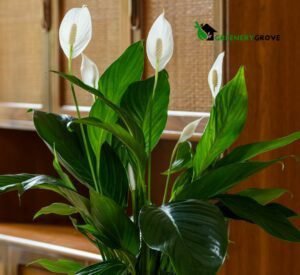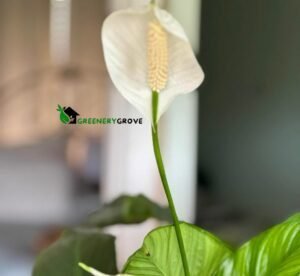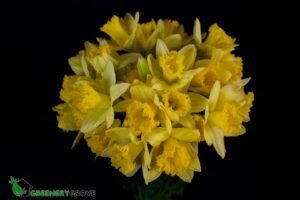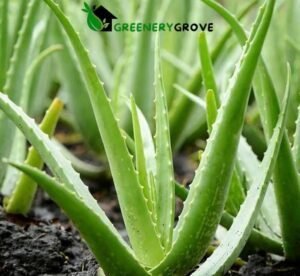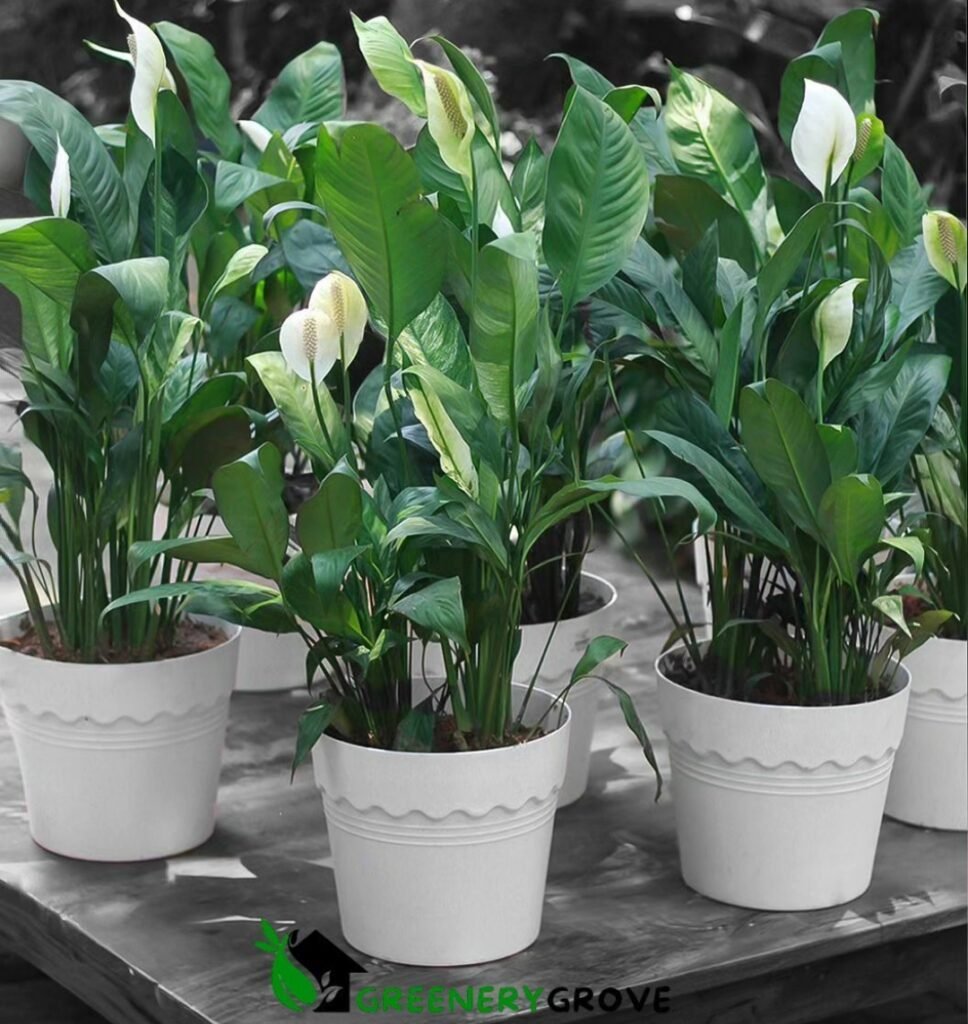
peace Lily, scientifically known as Spathiphyllum, is a famous indoor plant loved for its lavish foliage and exquisite white sprouts.These versatile indoor plants not only add beauty to any space but also offer numerous health benefits. Peace Lilies are excellent air purifiers, efficiently removing harmful toxins such as formaldehyde and benzene from indoor air. They also help regulate humidity levels and reduce the presence of mold spores, making them ideal for creating a healthier indoor environment.
Another notable names for Peace Lily plants include:
- White Sails
- Spathe Flower
- Cobra Plant
- Mauna Loa Peace Lily
- Closet Plant
Some Popular Peace Lily Varieties
There are several varieties of Peace Lily plants, each with its unique characteristics and features. Some popular varieties include:
Spathiphyllum wallisii: This is the most common variety, known for its elegant white flowers and glossy green leaves.
Spathiphyllum ‘Sensation’: This variety features larger leaves and flowers compared to the standard Peace Lily, making it a striking addition to any indoor space.
Spathiphyllum ‘Domino’: Characterized by its variegated foliage with white speckles or streaks, ‘Domino’ adds a touch of visual interest to indoor environments.
Spathiphyllum ‘Clevelandii’: This variety is prized for its compact growth habit and abundant blooms, making it ideal for smaller spaces or as a tabletop plant.
Spathiphyllum ‘Sweet Chico’: With its smaller size and delicate blooms, ‘Sweet Chico’ is perfect for adding a touch of beauty to desks, shelves, or windowsills.
These are just a few examples of the many Peace Lily varieties available, each offering its unique charm and beauty to indoor gardeners.
- Scientific Name: Spathiphyllum spp
- Common Names: Peace Lily, White Sails, Spathe Flower, Cobra Plant, Mauna Loa Peace Lily, Closet Plant
- Family: Araceae
- Origin: Tropical areas of Focal and South America
- Size: Typically grows 1-4 feet tall, depending on variety
- oliage: Glossy, dark green leaves that are lance-shaped or oval
- Flowers: White, spoon-shaped flowers (spathes) surrounded by a white or green hood (spadix)
- Bloom Time: Consistently, with tops in spring and summer
- Light Requirements: Indirect sunlight or bright, filtered light
- Temperature Range: 65-80°F (18-27°C)
- Watering Needs: Keep soil consistently moist but not soggy, water when the top inch of soil feels dry
- Humidity Tolerance: Thrives in moderate to high humidity levels, misting can help during dry periods
- Soil Type: Well-draining potting mix with organic matter
- Fertilization: Feed month to month during the developing season with a decent fluid manure weakened to half strength
- Toxicity: Toxic to pets and humans if ingested, can cause irritation and discomfort
- Maintenance: Low-maintenance, requires occasional pruning of dead or yellow leaves and repotting every 1-2 years
- Propagation: MethodsDivision of offsets (pups) or root division
7 Surprising Peace Lily Benefits
Air Purification: Peace Lily plants are exceptional air purifiers, effectively removing toxins such as formaldehyde, benzene, and carbon monoxide from indoor air. Their broad leaves act as natural filters, making them invaluable additions to homes and offices.
Humidity Regulation: These plants contribute to maintaining optimal humidity levels indoors through a process called transpiration, releasing moisture into the air. This can be especially helpful in dry environments or throughout the cold weather months when indoor air will in general be dry.
Reduction of Mold Spores: Peace Lilies help reduce the presence of mold spores indoors, making them ideal for areas prone to dampness or moisture buildup. By minimizing mold, they contribute to a healthier indoor environment.
Allergy Relief: Peace Lily plants can alleviate allergy symptoms by removing airborne allergens and pollutants. Their presence can provide relief to individuals suffering from allergies or asthma, improving overall indoor air quality.
Enhanced Mental Health: Studies have shown that indoor plants, including Peace Lilies, can reduce stress, anxiety, and depression. Their calming presence promotes a sense of tranquility and well-being, enhancing mental health and creating a more pleasant environment.
Improvement of Sleep Quality: Peace Lilies can contribute to better sleep quality by creating an ideal sleep environment. The purified air and calming ambiance they provide promote relaxation, leading to more restful and rejuvenating sleep.
Natural Decor: Beyond their health benefits, Peace Lily plants serve as beautiful natural decor, adding a touch of elegance to any space. With their lush foliage and elegant white blooms, they enhance the aesthetic appeal of homes, offices, and other indoor environments.
the benefits of Peace Lily plants extend far beyond their decorative value. From purifying indoor air and regulating humidity to reducing mold spores and promoting mental well-being, these versatile plants offer numerous advantages that can transform your space into a healthier and more inviting environment.
visit our instagram to get more plant related pictures and reels: https://www.instagram.com/greenery_grove/
Best Soil For Peace Lily
The best soil for Peace Lily plants is a well-draining potting mix with organic matter. A mixture of peat moss, perlite, and compost works well for Peace Lilies, providing good drainage while retaining moisture. Stay away from weighty soils that might hold an excess of water, as this can prompt root decay. Additionally, using a pot with drainage holes at the bottom helps prevent waterlogging. It’s essential to keep the soil consistently moist but not soggy, as Peace Lilies prefer slightly moist conditions. Consistently check the dampness level of the dirt and water when the top inch feels dry. Overall, a well-balanced potting mix with good drainage is key to keeping Peace Lily plants healthy and thriving.
Here are some types of soil that are good for Peace Lily plants:
Peat-based Soil: Peat-based soil is excellent for Peace Lilies because it retains moisture well while providing good drainage. It helps create a stable environment for the roots to thrive.
Potting Mix with Perlite: Adding perlite to a standard potting mix improves drainage and aeration, which is beneficial for Peace Lily plants. Perlite helps prevent waterlogging and keeps the soil from becoming compacted.
Coco Coir: Coco coir, made from coconut husks, is another excellent option for Peace Lilies. It has excellent water retention properties while still allowing for proper drainage. Coco coir is likewise harmless to the ecosystem and economical.
Well-Draining Soil Mix: A well-draining soil mix consisting of equal parts potting soil, perlite, and coarse sand is ideal for Peace Lily plants. This combination ensures that the soil remains moist but not waterlogged, promoting healthy root growth.
African Violet Soil Mix: African violet soil mixes are formulated to provide the right balance of moisture retention and drainage, making them suitable for Peace Lilies as well. These mixes typically contain peat moss, perlite, and vermiculite.
How To Grow Peace Lily In Water
Growing Peace Lily plants in water is possible, but it requires a different approach compared to growing them in soil. Here’s how to grow Peace Lily in water:
Select a Healthy Plant: Start with a healthy Peace Lily plant with strong roots. Choose a plant with multiple stems if possible, as this will increase the chances of successful water propagation.
Prepare a Container: Use a clean glass or transparent container to grow the Peace Lily in water. Make sure the container is large enough to accommodate the plant’s roots and provides stability to prevent tipping over.
Add Water: Fill the container with room temperature water, ensuring that the roots of the Peace Lily will be submerged. Use filtered or distilled water to prevent the buildup of salts and minerals, which can harm the plant.
Place the Plant: Carefully place the Peace Lily plant in the container, making sure the roots are fully submerged in water. Position the compartment in an area with splendid, roundabout daylight.
Monitor and Maintain: Regularly check the water level to ensure that the roots remain submerged. Change the water every week to prevent stagnation and the growth of algae. Trim any yellow or rotting roots to keep the plant healthy.
Provide Nutrients: While Peace Lilies can survive in water alone, they will benefit from occasional feeding. Add a diluted liquid fertilizer to the water every month during the growing season to provide essential nutrients.
Transplanting: After some time, you may notice new growth emerging from the submerged roots. Once the roots have grown significantly, you can transplant the Peace Lily into a pot with soil if desired.
Growing Peace Lily in water can be a rewarding experience, allowing you to observe the plant’s root development and growth. With proper care and maintenance, your Peace Lily can thrive in a water environment, adding beauty to your home or office space.
Peace Lily Brown Tips And Peace Lily Yellow Leaves
Brown tips on Peace Lily leaves and yellowing leaves are common issues that can indicate various underlying problems. Here’s how to address each:
Brown Tips on Peace Lily Leaves:
Brown tips on Peace Lily leaves are often caused by dry air or inconsistent watering. To remedy this issue:
Humidity: Increase humidity around the plant by misting the leaves regularly or placing a humidity tray filled with water and pebbles near the plant.
Watering: Ensure that you are watering the Peace Lily consistently, keeping the soil evenly moist but not waterlogged. Avoid letting the soil dry out completely between waterings, as this can lead to leaf tip browning.
Water Quality: Use filtered or distilled water to avoid the buildup of salts and minerals, which can cause leaf burn.
Trimming: Trim off the browned tips with clean scissors to improve the plant’s appearance. Make sure to cut just above the browned area, leaving a clean edge.
Yellow Leaves on Peace Lily:
Yellowing leaves on a Peace Lily can be a sign of overwatering, underwatering, or other issues. Here’s how to address yellow leaves:
Watering: Check the moisture level of the soil and adjust your watering routine accordingly. if the dirt is reliably soaked, reduce watering recurrence. Conversely, if the soil is dry, water the plant more often.
Drainage: Ensure that the pot has proper drainage holes at the bottom to prevent water from pooling around the roots. Repot the plant in well-depleting soil if vital.
Light: Peace Lilies prefer bright, indirect light. Ensure that the plant is not exposed to direct sunlight, as this can cause leaf scorching and yellowing.
Nutrient Deficiency: Yellowing leaves can also indicate a nutrient deficiency, particularly nitrogen. Think about taking care of the plant with a fair compost to recharge fundamental supplements.
Pest or Disease: Check the plant for signs of pests such as spider mites or diseases such as root rot, which can also cause yellowing leaves. Treat the plant accordingly if pests or diseases are present.
By addressing the underlying causes of brown tips and yellowing leaves, you can help your Peace Lily regain its health and vitality, ensuring it continues to thrive and beautify your indoor space.
Frequently Asked Questions
Are Peace Lilies toxic to cats?
Indeed, Peace Lilies are poisonous to felines whenever ingested. They contain calcium oxalate crystals, which can cause irritation and discomfort if consumed. It’s essential to keep Peace Lilies out of reach of cats and other pets to prevent accidental ingestion.
Can a Peace Lily live outside?
Peace Lilies are native to tropical regions and thrive in warm, humid environments. While they can tolerate outdoor conditions in mild climates, they are primarily grown as indoor plants in most regions. If you live in a suitable climate with temperatures above 50°F (10°C) and high humidity, you can place your Peace Lily outdoors in a shaded or partially shaded area.
How much light does a Peace Lily need?
Peace Lilies prefer bright, roundabout light yet can endure low-light circumstances. Place them near a window with filtered sunlight or in a location where they receive bright, indirect light for several hours a day. Avoid exposing Peace Lilies to direct sunlight, as this can scorch their leaves. If growing them indoors, providing artificial grow lights can supplement natural light and ensure optimal growth.

